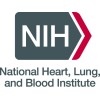
Safety and Efficacy of the DALI LDL-adsorber and MONET Lipoprotein Filter
HypercholesterolemiaFamilial1 moreLow Density Lipoprotein (LDL)-apheresis refers to a procedure in which blood taken from a patient's vein is cleaned from pathogenic substances, e.g. cholesterol, outside the body and then given back to the patient. In the DALI (Direct Adsorption of Lipoproteins)-system whole blood is pumped over an adsorber containing beads that selectively bind LDL-cholesterol. The MONET (Membrane filtration Optimized Novel Extracorporeal Treatment)-system works with plasma which is cleaned by filtration. This study comprises the recording of safety and efficacy data from patients treated either with the DALI or MONET-system over a period of 2 years.

Vascular Lifestyle-Intervention and Screening in Pharmacy
Cardiovascular DiseasesHypercholesterolemia4 moreThe overall goal of the present project is to contribute to new knowledge about the effect of a low threshold population screening system for cardiovascular risk factors in Norway. Further, this project aim to study if identifying high cardiovascular risk itself may lead to beneficial changes in health behaviors such as physical activity, diet, tobacco and alcohol behavior together with reduced risk score of cardiovascular disease, across socioeconomic status. This fall, a nationwide, free screening of cardiovascular risk factors will be conducted in 150 pharmacies in Norway. All participants that consent to participate will measure full lipid-profile, blood pressure, HbA1c, body weight and height by health care providers in pharmacies. Based on their measurement levels, participants will be stratified into either a low or a high risk group. In the high risk group, participants will further be randomized to either the intervention group or one of the two control groups. Participants in the intervention group will be informed about all their measurement levels with comparison to the recommended levels. Contrary, participants randomized to the two control groups will have delayed information of their measured levels. Participants in the intervention group and the first control groups will receive general oral and written information about how to lower their measurement levels in 8 weeks. In the second control group, participants will not receive any information at the first visit. In this way the investigators may be able to isolate the effect of identifying high risk and high levels of the risk factors itself. All groups will be given a diet- and physical activity questionnaire at visit 1, and will be invited back after 8 weeks to once more perform the measurement screening and receive the same questionnaire. At visit 2, all participants will, after the measurement screening, be informed about their measured risk factors and receive information on how to lower their levels. 1 year after inclusion, all participants in the three groups will be invited back for a one-year follow up visit in pharmacy.

Observational to Investigate the Efficacy of CRESTOR 5mg in Reaching LDL-C Target Goals in Patients...
HypercholesteremiaObservational study to investigate the use and efficacy of CRESTOR 5 mg in reaching LDL-C target goals in both statin naïve and statin treated primary and secondary prevention patients at high risk for a cardiovascular event.

Hyperapo B and Coronary Heart Disease
Cardiovascular DiseasesCoronary Disease5 moreTo determine the role of apolipoprotein B and apolipoprotein A1 in the etiology of coronary artery disease.

Primary Prevention of CHD Risk Factors Occurring in US
Cardiovascular DiseasesHeart Diseases4 moreTo evaluate the effectiveness of primary prevention of coronary heart disease risk factors by examining data from the National Health Examination Survey (NHES) and the National Health and Nutrition Examination Surveys (NHANES) to determine whether more recent birth cohorts were attaining lower blood pressure and cholesterol levels than earlier birth cohorts.

Evaluating Strategies to Control Hypercholesterolemia
Cardiovascular DiseasesHeart Diseases1 moreTo determine the cost-effectiveness of alternative strategies for cholesterol reduction.

Metabolic Abnormalities in HIV Infected and Uninfected Young Women
HIV InfectionsHypercholesterolemia1 moreThough anti-HIV drugs can dramatically improve the health of people with HIV, some people taking these drugs develop serious long term effects in their metabolism. These effects include problems with bones, increased levels of blood sugar and lipids, and changes in body fat distribution. The purpose of this study is to see how many young women are experiencing these problems and how severe the problems are. This kind of study is the first step in determining how best to treat these problems.

Evolocumab Pregnancy Exposure Registry
Hypercholesterolemia; ASCVD; PregnancyThis is a prospective observational registry study to evaluate fetal, infant and childhood outcomes in women exposed to evolocumab during pregnancy

Study to Evaluate the Safety of Repatha® in Pregnancy
HypercholesterolaemiaPregnancyTo evaluate pregnancy and infant outcomes among females diagnosed with familial hypercholesterolaemia (FH), exposed to Repatha® during pregnancy. This includes follow-up of their infants to the age of 12 months

French Observatory of Familial Hypercholesterolemia in Cardiology
Familial HypercholesterolemiaThe Family Hypercholesterolemia remains poorly diagnosed disease with an outlet sometimes suboptimal care. However, the Family Hypercholesterolemia exposes patients concerned at increased cardiovascular risk. The frequency of familial hypercholesterolemia in cardiologic is little studied and remains unknown, and there is little data on the profile of patients, diagnostic methods and management. Main objectives: Establish a monitoring patients with hypercholesterolemia Family cardiology in France Characterize the Family hypercholesterolemia in cardiology, including assessing the frequency of the most severe forms, which are at higher cardiovascular risk.
